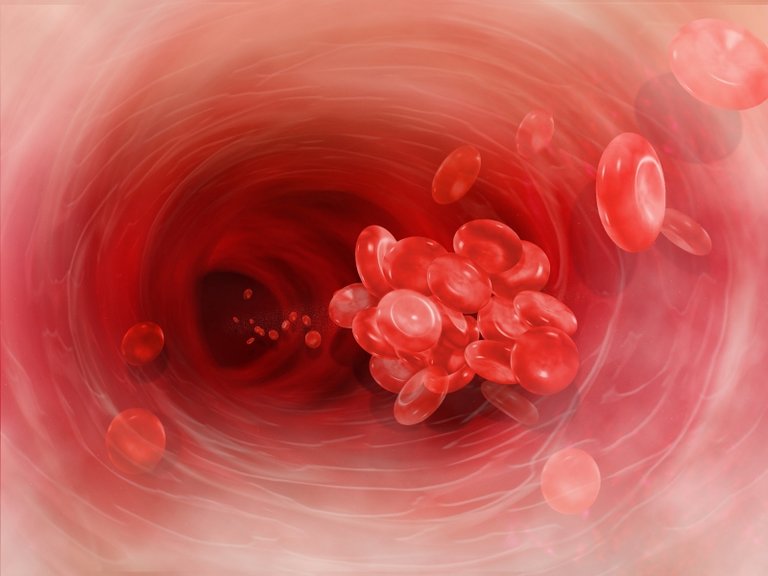The Mechanisms Behind Coagulopathy and the Role of Glycocalyx in Blood Clotting
In cases of injury, the concern over bleeding and the need for blood to clot become paramount. While a necessary process to prevent excessive bleeding at the site of injury, clotting can take a dangerous turn if it occurs within a blood vessel, distant from the initial injury, potentially leading to significant blood loss. Striking the right balance is crucial because, in the world of clotting, both too much and too little can have dire consequences.
Blood clot is controlled in the body, and while too much is bad as it can lead to blood clotting in bloodstream which could cause the blocking of blood vessels and could cause other serious conditions such as organ damage, too little is also bad as a person can keep bleeding when there is a cut. People with genetic disorders such as Hemophilia suffer from little blood clotting while people with thrombophilia suffer from too much clotting.
Traumatic injuries can present a unique challenge. In many cases, individuals who have sustained such injuries may experience coagulopathy, a condition where the balance of blood clotting is disrupted. This condition is often linked to the glycocalyx, a sugar and protein-based layer lining the interior of blood vessels.
Glycocalyx is made from sugar and protein and it lines the inside of blood vessels which serves as an anti blood clotting coat that separates blood from the endothelial cells that makes up the blood vessels. When glycocalyx are separated from he endothelial cells, they become platforms for clot formation.
Since glycocalyx is anchored to the blood vessel, then a detachment would mean injury to that blood vessel thereby causing clotting in that region and these regions could be far away from a place where there is an open primary injury. In traumatic injury patients, this occurs as a result of lack of oxygen in cell for a while and then get oxygen all of a sudden. This will lead to clotting in other parts of the body which can be dangerous.
A study in 2023 showed that the enzyme succinate dehydrogenase may be a key player in causing the blood clot when oxygen is suddenly received after a while of not having oxygen. Succinate is part of the energy production in the mithochondria and it uses oxygen to generate ATP. Without oxygen, this cycle stops allowing succinate to build up in the endothelial cell. When the cells then get oxygen, the succinate is moved to the next step by succinate dehydrogenase which leaves byproducts known as reactive oxygen species (ROS) which are responsible for causing endothelial cells to detach glucocalyx from its surface leaving the cells to become sites for clot formation.
In this study, the researchers utilized the molecule dimethyl malonate to prevent glycocalyx shedding, successfully alleviating coagulopathy in both in vitro experiments and mice. Rats treated with this molecule demonstrated a significantly improved capacity to manage coagulopathy, ultimately increasing their chances of survival. It is noteworthy that this molecule is the same compound found in perfumes, contributing to the pleasing scent of jasmine.
Although the discovery of preventing glycocalyx shedding offers promise in mitigating coagulopathy, it is just one piece of the intricate puzzle governing blood clotting. Further extensive research is required to grasp the full spectrum of factors influencing this intricate biological process.
Reference
- https://www.science.org/doi/10.1126/sciadv.adf6600
- https://www.cdc.gov/nchs/data/nvsr/nvsr70/nvsr70-09-508.pdf
- https://www.ncbi.nlm.nih.gov/pmc/articles/PMC10266735/
- https://www.ncbi.nlm.nih.gov/pmc/articles/PMC4260295/
- https://www.ncbi.nlm.nih.gov/pmc/articles/PMC6147229/
- https://www.nature.com/articles/s41572-021-00264-3
- https://my.clevelandclinic.org/health/diseases/21797-thrombophilia
- https://onlinelibrary.wiley.com/doi/abs/10.1046/j.1365-2141.1996.5101050.x
- https://www.haematologica.org/article/view/8615
- https://www.ncbi.nlm.nih.gov/pmc/articles/PMC6147229/
- https://stacks.cdc.gov/view/cdc/119311


Thanks for your contribution to the STEMsocial community. Feel free to join us on discord to get to know the rest of us!
Please consider delegating to the @stemsocial account (85% of the curation rewards are returned).
Thanks for including @stemsocial as a beneficiary, which gives you stronger support.
Thank you. That's an interesting and informative article.
Thank you too friend.